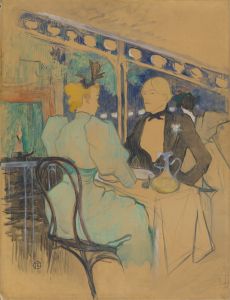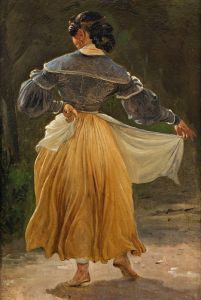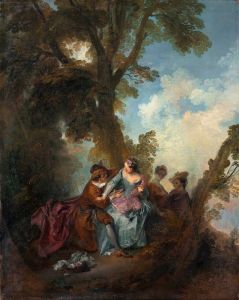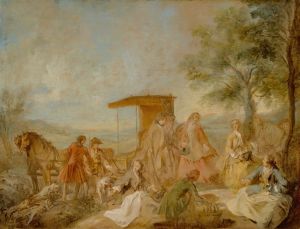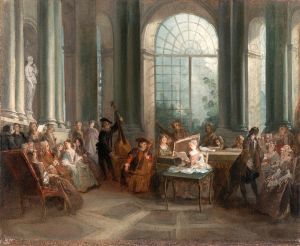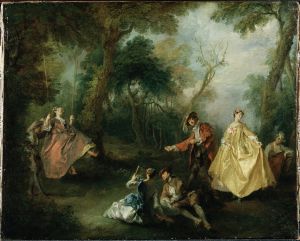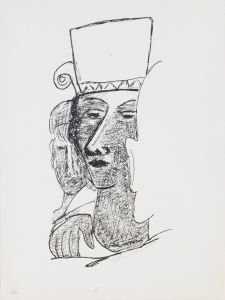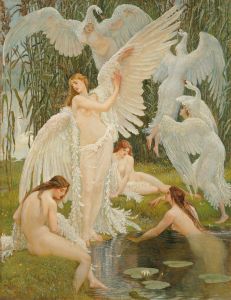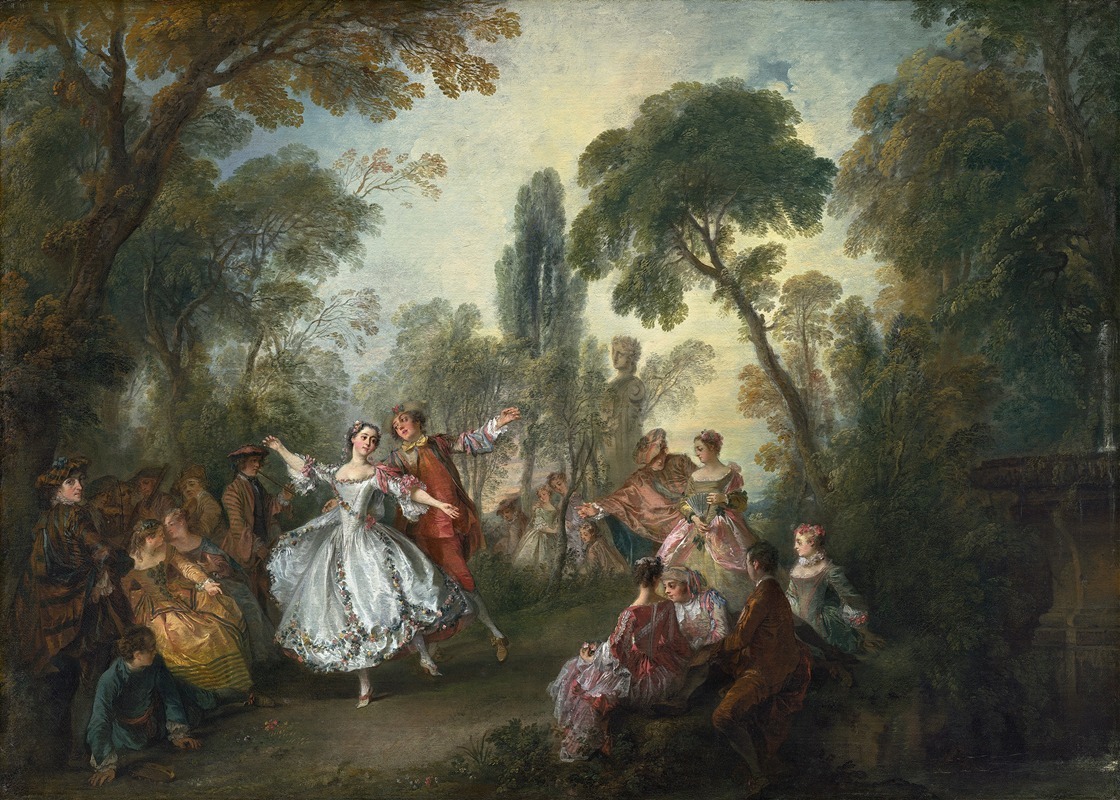
La Camargo Dancing
A hand-painted replica of Nicolas Lancret’s masterpiece La Camargo Dancing, meticulously crafted by professional artists to capture the true essence of the original. Each piece is created with museum-quality canvas and rare mineral pigments, carefully painted by experienced artists with delicate brushstrokes and rich, layered colors to perfectly recreate the texture of the original artwork. Unlike machine-printed reproductions, this hand-painted version brings the painting to life, infused with the artist’s emotions and skill in every stroke. Whether for personal collection or home decoration, it instantly elevates the artistic atmosphere of any space.
"La Camargo Dancing" is a celebrated painting by the French Rococo artist Nicolas Lancret, created around the early 18th century. Nicolas Lancret, born in 1690 and deceased in 1743, was a prominent painter known for his genre scenes that captured the lively and elegant spirit of the Rococo period. His works often depicted scenes of leisure and entertainment, reflecting the tastes and social dynamics of the French aristocracy during the reign of Louis XV.
The painting features Marie Anne de Cupis de Camargo, commonly known as La Camargo, who was a renowned French dancer of the 18th century. Born in Brussels in 1710, La Camargo became one of the most famous ballerinas of her time, celebrated for her technical skill and innovative contributions to ballet. She is credited with popularizing the entrechat quatre, a ballet step that involves a rapid crossing of the legs while in the air, and for being one of the first women to shorten her skirts to showcase her intricate footwork, a significant departure from the fashion of the time.
In "La Camargo Dancing," Lancret captures the dancer in a moment of graceful movement, embodying the elegance and charm for which she was known. The painting is a vivid representation of the Rococo style, characterized by its lightness, fluidity, and emphasis on movement. Lancret's use of soft colors and delicate brushwork enhances the sense of motion and the ethereal quality of the scene.
The composition of the painting is carefully balanced, with La Camargo positioned centrally, drawing the viewer's eye to her poised figure. Her costume, likely a stage dress, is depicted with attention to detail, highlighting the textures and folds of the fabric. The background, though less detailed, provides a sense of depth and context, suggesting a theatrical setting that complements the subject's profession.
"La Camargo Dancing" not only showcases Lancret's artistic skill but also serves as a historical document of the cultural milieu of 18th-century France. The painting reflects the period's fascination with dance and performance, as well as the broader societal trends towards leisure and entertainment among the upper classes. It also underscores the role of women in the arts during this era, with La Camargo herself being a trailblazer in the world of ballet.
Today, Nicolas Lancret's works, including "La Camargo Dancing," are appreciated for their contribution to the Rococo movement and their ability to capture the essence of a bygone era. The painting remains an important piece in the study of both art history and the history of dance, offering insights into the aesthetics and cultural values of 18th-century France. It is housed in various collections and continues to be a subject of interest for art historians and enthusiasts alike, who admire its beauty and historical significance.






